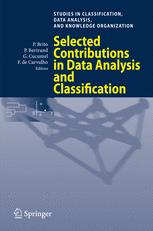

Most ebook files are in PDF format, so you can easily read them using various software such as Foxit Reader or directly on the Google Chrome browser.
Some ebook files are released by publishers in other formats such as .awz, .mobi, .epub, .fb2, etc. You may need to install specific software to read these formats on mobile/PC, such as Calibre.
Please read the tutorial at this link: https://ebookbell.com/faq
We offer FREE conversion to the popular formats you request; however, this may take some time. Therefore, right after payment, please email us, and we will try to provide the service as quickly as possible.
For some exceptional file formats or broken links (if any), please refrain from opening any disputes. Instead, email us first, and we will try to assist within a maximum of 6 hours.
EbookBell Team

5.0
60 reviewsBy inviting me to write a preface, the organizers of the event in honour of Edwin Diday, have expressed their a?ection and I appreciate this very much. This gives me an opportunity to express my friendship and admiration for Edwin Diday, and I wrote this foreword with pleasure. My ?rst few meetings withEdwinDidaydatebackto1965through1975,daysofthedevelopmentof French statistics. This was a period when access to computers revolutionized the practice of statistics. This does not refer to individual computers or to terminals that have access to powerful networks. This was the era of the ?rst university calculation centres that one accessed over a counter. One would deposit cards on which program and data were punched in and come back a few hours or days later for the results. Like all those who used linear data analysis, the computer enabled me to calculate for each data set the value of mathematical objects (eigenvalues and eigenvectors for example) whose optimality properties had been demonstrated by mathematicians. It was - ready a big step to be able to do this in concrete experimental situations. With Dynamic Clustering Algorithm, Edwin Diday allowed us to discover that computers could be more than just a way of giving numerical values to known mathematical objects. Besides the e?ciency of the solutions he built, he led us to integrate the access to computers di?erently in the research and practice of data analysis.